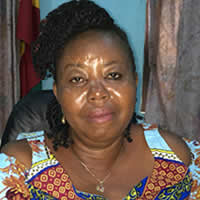

Number and Levels of Health Facilities
The district has seven health facilities all working to promote the health conditions of a population of 89,227. Two out of the seven health facilities have attained the status of a hospital; four of them are also clinics and the remaining one being a health centre. The district hospital is located at the district capital, Ejura with the other at Kasei in the north-eastern part of the district. Communities like Homako, Nkwanta, Nyamebekyere, Zambrama and Anyinasu have clinics whilst the only health care centre in the district is located at Sekyedumase.
The district has 3 doctors and in relation to the total population of 89227 gives an unfavourable doctor-population ratio of 1:29742 as against the current national ratio of 1:20000. It is even worse as compared to the UN standard of 1:5000. In a well-accepted environment, the district should have not less than 18 doctors to support this population and more measures should be put in place to increase their numbers. The table above also shows a nurse-population ratio of 1: 3879. According to the National Planning standard, a hospital should have at least 250 beds; and comparing this to the health status quo of the district (two hospitals with 99 beds), plans should be made to increase them to suit the status of hospital to ease pressure on these facilities.
Health Facility Patronized
(74.5%) of the people access their health needs in hospitals. This implies that all other things been equal the inhabitants in the district will get better treatment will boost development in the district.
Location of Health Facilities
(55.3%) access their health needs within the district. This shows that the health facilities have been distributed within the district. This implies that emergency cases could be easily attended to. There is going to be available health officials in the district to assist in information dissemination and for dealing with health matters within the district.
The average distance to a health facility in the district is 1.9km; compared to the National Planning Standard of 5km. This makes physical accessibility to health facilities become easy as majority of the communities lie within the high access zone. This implies that there is easy access to health facilities in the district and hence emergency cases would be easily resolved.
41% of the people complain of inadequate facilities and personnel in the health institutions, 27% also complain of high cost of one attending to his/her health needs. 17% face the problem of the poor attitude of staff whilst the remaining 15% complain of long queues in the various health centres. This reveals the degree of pressure being posed on the existing facilities and personnel in the district.
Immunization Coverage in the District
Immunization coverage in the district currently stands at 70%. This is the results of mass immunization campaigns organized recently. This will help reduce the prevalence rate of some common diseases in the district. This notwithstanding, efforts should be made to reach the national target of at least 80% coverage.
The National Health Insurance Scheme (NHIS)
This is a nation wide programme to replace the current cash and carry system of health finance to make health services economically accessible for all people in the country. It is an alternative health care payment system which has risk pooling effect. It is the system that spreads the health care cost over group of subscribers. It is noted that in health insurance the larger the subscribers, the lower the risk to the individual subscriber. Thus, an insured patient does not have to pay directly from his or her pocket for health services at the time of use.
NHIS Awareness
The National Health Insurance Scheme is well known within the district, as majority of the people (86.7%) are aware of it. The mode of sending information on this policy in the district has been very effective. In addition, implementation of the scheme in the district will not be difficult as the inhabitants are aware of its importance and effects. As regards to registration, 50.6% of the households have registered with the scheme. Of those households who have not registered with the scheme, 60.4% of them attributed it financial difficulties, 4% did not register due to political reasons while 17.6% explained that they have no access to the NHIS officials. The remaining 18% did not register as a result of poor dissemination of information regarding the NHIS.
Registration with the scheme has made considerable gains and is running smoothly in the district. Thus 50.6% have registered so far with scheme. The cash and carry system will phase out in the medium to long term as majority of people will be accessing the scheme in the medium to long term. Education on the scheme should be intensified to make more people register and for it to achieve the intended objectives.
Incidence of HIV/AIDS
HIV/AIDS has been a life threatening disease in the world and as a result, most governments have been putting measures in place to reduce its incidence. The District Response Initiative (DRI) team has conducted a number of campaigns on HIV/AIDS. The campaigns took the form of publicity, seminars and many more. Apart from the District Response Initiative Activities of health officials also help to disseminate the information on HIV/AIDS to the people as they visit the hospitals. This disease is capable of reducing the labour force of the district and eventually decreasing its level of productivity. The table below presents the yearly infections of the deadly disease in the district.
From table 1.81, it is shown that out of the reported cases, 53.7% and 46.3% were recorded in 2002 and 2003 respectively. This gives a prevalence rate of 0.06
HIV/AIDS Management Programmes in the District
The District Response Initiative (DRI) team has been engaged in a number of programmes to help reduce the spread of the disease. They include
• HIV/AIDS education. This takes the form of radio programmes, education through health officials, and the routine use of the information van. This campaign on the prevention of HIV/AIDS in the district has been effective since it has been able to reduce the number of infections for 2003.
• Care and Support for infected and affected persons. This takes the form of payment of medical bills, Payment of school fees, Provision of logistics (such as clothing, books and pens, school uniforms etc) Vocational training for those not in school and the Provision of Anti-retroviral drugs for identified infected and affected persons.
Mortality in the District
This refers to the number of deaths that occur within a population. The possibility of dieing during a giving period is linked to many factors such as age, sex, race, occupation, social class and morbidity. The incidence of deaths can much about a population’s standard of living and health care.
Death rate = number of deaths/ total population (1000)
Number of deaths = 50
Total population =89227
This gives a death rate of 50/89227*1000 = 0.6
This implies, approximately one person dies per 1000 population
Date Created : 11/18/2017 6:46:03 AM











 facebook
facebook
 twitter
twitter
 Youtube
Youtube
 +233 593 831 280
+233 593 831 280 0800 430 430
0800 430 430 GPS: GE-231-4383
GPS: GE-231-4383 info@ghanadistricts.com
info@ghanadistricts.com Box GP1044, Accra, Ghana
Box GP1044, Accra, Ghana